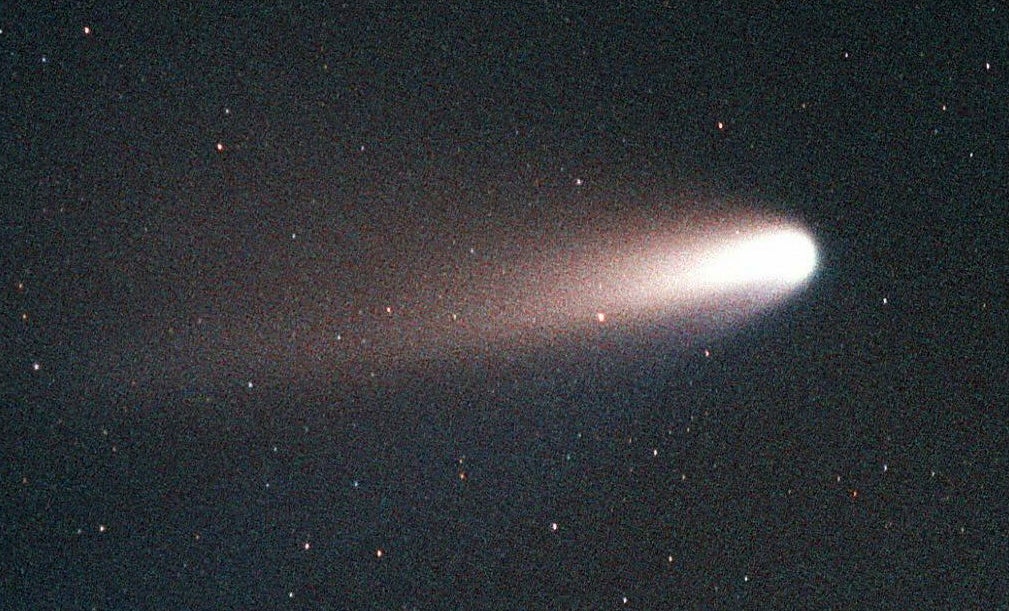When C/2019 Y4 ATLAS fragmented in April 2020, many were dismayed at the loss of what would’ve been the brightest comet since the 1997 passing of Hale-Bopp. But NASA and the European Space Agency’s Solar Orbiter just flew near what’s left of ATLAS, giving scientists a rare look at what happens to a comet’s tail when it’s no longer tailing anything.
First observed in December 2019, ATLAS was on the space agencies’ radars for a while and would have been visible to the naked eye in May 2020, but it grew rapidly brighter in the preceding month and crumbled before that could happen. The comet’s breakup was captured by the Hubble Space Telescope, which revealed a phantasmal glow from the comet’s pieces when they was still 146 million kilometres from Earth. The bits are roughly the size of a house each, and together they resemble the headlights of a submersible in the deep sea.
While the comet’s disintegration was a disappointment in some ways, the comet’s tail has stuck around, and so the Solar Orbiter was enlisted to check out what was left. (It was going to be in the area anyway, so it was a convenient enough space errand to run.) The research team took combined measurements of ATLAS’ remnants using all of Solar Orbiter’s in-situ instruments: its energetic particle detector, magnetometer, radio and plasma waves experiment, and solar wind analyser. Full descriptions of the Solar Orbiter’s payload are available on the ESA’s website.

Comets are most known for their iconic dust tail, which streaks away from the nucleus. But the bodies also have ion tails, which are a typically fainter and come from the comet’s gas interacting with the solar wind. The Solar Orbiter’s magnetometer was vital to the team’s observations, as it takes measurements of local magnetic fields, enabling the team to see how the magnetic field of the comet’s tail interacted with the magnetic field carried through the solar system by the solar wind.
The model the team developed from all this data indicated that the interplanetary magnetic field bends around the comet, and the central tail of the comet has a weaker magnetic field than what surrounds it. You can think of the comet as a biker on a windy day — the solar wind bends around the comet. According to a Royal Astronomical Society press release, the combination of the magnetic field draping and the ions produced by the comet’s melting nucleus produces the comet’s ion tail.
“This is quite a unique event, and an exciting opportunity for us to study the makeup and structure of comet tails in unprecedented detail,” said Lorenzo Matteini, a solar physicist at Imperial College London and leader of the recent work, in the same release. “Hopefully with the Parker Solar Probe and Solar Orbiter now orbiting the Sun closer than ever before, these events may become much more common in future!”
Amateur astronomers certainly missed out on what would have been a spectacular view last year. But their loss was physicists’ gain, as they’ve been able to better understand these strange phenomena.
